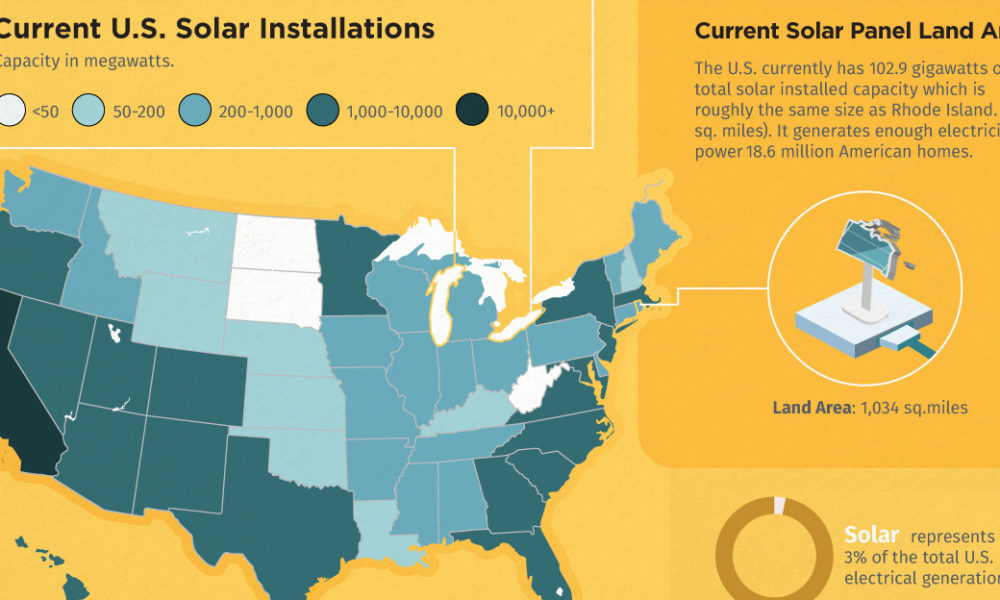Is there enough solar energy to power the US?

In recent years, there has been a growing interest in harnessing solar energy as a viable alternative to traditional fossil fuels. With concerns about climate change, rising energy costs, and the need for sustainable solutions, many are now questioning if solar energy can power the entire United States. In this article, we will explore the current state of solar energy in the US, its potential, challenges, technological advances, government initiatives, economic impact, environmental benefits, successful case studies, and address some frequently asked questions.
- The Current State of Solar Energy in the US
- The Potential of Solar Energy in the US
- Challenges and Barriers to Harnessing Solar Power
- Technological Advances in Solar Energy
- Government Initiatives and Incentives for Solar Power
- The Economic Impact of Solar Energy
- Environmental Benefits of Solar Power
- Case Studies of Successful Solar Power Implementation
- Conclusion
- Frequently Asked Questions
The Current State of Solar Energy in the US
The US has made significant progress in solar energy adoption. According to the Solar Energy Industries Association (SEIA), solar capacity has grown by an average of 42% per year over the past decade. As of 2021, the US has over 100 gigawatts of installed solar capacity, enough to power more than 18 million homes.
The Potential of Solar Energy in the US
The potential for solar energy in the US is immense. The National Renewable Energy Laboratory (NREL) estimates that the US receives enough sunlight to potentially generate more than 100 times its current electricity needs. With advancements in solar technology and widespread adoption, solar power could play a significant role in meeting the nation's energy demands.
Challenges and Barriers to Harnessing Solar Power
Despite its potential, there are challenges and barriers that hinder the widespread adoption of solar power. These include the high upfront costs of installation, limited availability of suitable land for large-scale solar farms, intermittent nature of sunlight, and the need for an upgraded electrical grid to handle the increased renewable energy capacity.
Technological Advances in Solar Energy
Technological advancements have greatly enhanced the efficiency and affordability of solar energy. Innovations such as solar panels with higher conversion rates, energy storage solutions, and smart grid integration are making solar power more accessible and reliable. Ongoing research and development continue to drive the progress of solar technology.
Government Initiatives and Incentives for Solar Power
The US government has implemented various initiatives and incentives to promote solar power adoption. These include federal tax credits, grants, and loan programs that help reduce the upfront costs of installation. Additionally, state-level policies and renewable portfolio standards have encouraged utilities to increase their use of renewable energy sources, including solar power.
The Economic Impact of Solar Energy
The transition to solar energy has significant economic benefits. The solar industry has created numerous job opportunities, with over 231,000 Americans currently employed in the sector. Moreover, investing in solar power reduces dependence on imported fossil fuels, stabilizes energy prices, and stimulates local economies through increased spending and tax revenue.
Environmental Benefits of Solar Power
Solar power offers significant environmental advantages. By utilizing the sun's energy, solar power reduces greenhouse gas emissions, mitigates air pollution, and conserves water resources. The deployment of solar energy also helps combat climate change and promotes a cleaner and healthier environment for future generations.
Case Studies of Successful Solar Power Implementation
Several case studies demonstrate the successful implementation of solar power in the US. For example, the Topaz Solar Farm in California is one of the world's largest solar installations, capable of generating enough clean energy to power approximately 180,000 homes. Other notable projects include the Solar Energy Generating Systems in Nevada and the Ivanpah Solar Power Facility in California.
Conclusion
While there are challenges to overcome, the US has made significant progress in harnessing solar power. With its vast solar potential, technological advancements, government support, and environmental and economic benefits, solar energy has the capacity to power the entire nation. Transitioning to solar power is a crucial step towards a sustainable and renewable energy future for the US.
Frequently Asked Questions
1. How much solar energy does the US receive annually?
The US receives an average of 4.5 kilowatt-hours (kWh) of solar energy per square meter per day, which amounts to over 1.6 million kWh per year.
2. Can solar energy meet the energy demands of the entire US?
Yes, with advancements in solar technology and widespread adoption, solar energy has the potential to meet the energy demands of the entire US.
3. What are the economic benefits of transitioning to solar power?
The transition to solar power creates jobs, reduces dependence on imported fossil fuels, stabilizes energy prices, and stimulates local economies through increased spending and tax revenue.
4. What are the environmental advantages of using solar energy?
Solar energy reduces greenhouse gas emissions, mitigates air pollution, conserves water resources, and helps combat climate change.

Leave a Reply